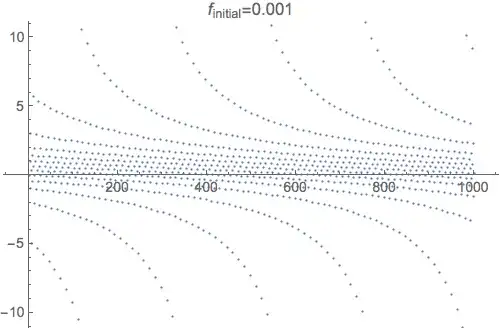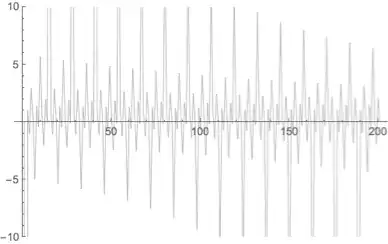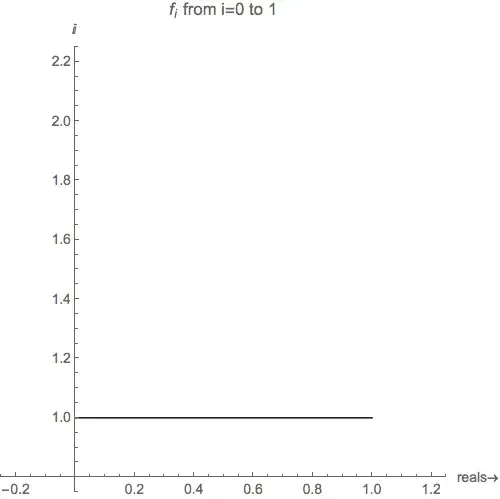Solving this equation
$$x = 1-\cfrac{2}{1-\cfrac{2}{1-\cfrac{2}{\ddots}}}$$
Sub in $x$
$$x=1-\frac{2}{x}\implies x^2=x-2 \implies x^2-x=-2$$
Solve through completing the square \begin{align} x^2-x+\frac{1}{4}&=-2+\frac{1}{4}\\ \left(x-\frac{1}{2}\right)^2&=-\frac74\\ x-\frac{1}{2}&=\pm\sqrt{\frac{7}{4}}i\\ x&=\frac{1}{2}\pm\sqrt{\frac{7}{4}}i\\ \end{align} When you substitute this value back in for $x$ it works.
But i don't understand why a equation like this can equal a complex value
Maybe I am missing something important here?
EDIT: So this equation diverges right. Does that make my working invalid, or just explain the non-real part.
Can anything useful be done by defining this recursively
$$f(x)=1-\frac{2}{f(x)}$$
and then using a seed value
I also wonder whether we would end up dividing by zero at some point. Can you prove we do or don't?


